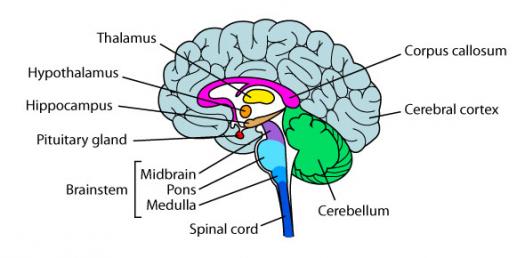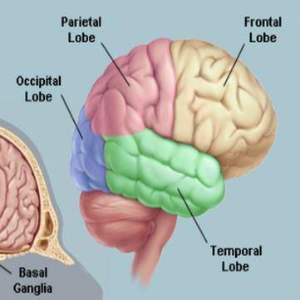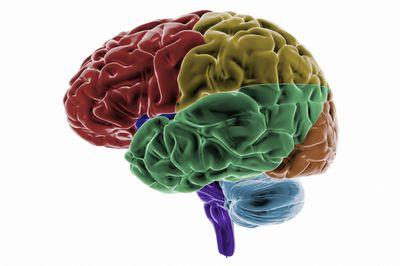How Much Do You Know The Various Parts Of The Brain? Q & As

The brain is the most crucial part of the human body that is vital for human existence. Did you know that our brain keeps developing till we reach 25 years of age? Ever wondered how much do you know about the human brain? Can you name parts of the brain? Test your knowledge on this brain quiz to see how you do and compare your score too.
- 1.
What is the biggest part of the brain?
- A.
Cerebrum
- B.
Thalamus
- C.
Brain stem
- D.
Cerebellum
Correct Answer
A. CerebrumExplanation
The cerebrum is the correct answer because it is the largest part of the brain. It is responsible for higher brain functions such as memory, language, thinking, and problem-solving. It is divided into two hemispheres, each controlling the opposite side of the body. The cerebrum also contains the cerebral cortex, which is responsible for processing sensory information and initiating motor responses. Overall, the cerebrum plays a crucial role in many complex cognitive processes and is the largest and most developed part of the human brain.Rate this question:
-
- 2.
The cerebrum controls how we ____________?HINT:
Correct Answer
think , plan, imagine, reasonExplanation
The cerebrum is responsible for controlling various cognitive processes such as thinking, planning, imagining, and reasoning. It is the largest part of the brain and plays a crucial role in higher-order functions like decision-making and problem-solving. These processes involve the complex integration of information from different regions of the brain, allowing us to process and analyze information, generate ideas, and make logical deductions. Therefore, the cerebrum is involved in all these cognitive processes mentioned in the answer.Rate this question:
- 3.
What is the back part of the brain called?
- A.
Thalamus
- B.
Cerebellum
- C.
Cerebrum
- D.
Brain stem
Correct Answer
B. CerebellumExplanation
The back part of the brain is called the cerebellum. It is responsible for coordinating voluntary movements, balance, and posture. It receives information from the sensory systems, the spinal cord, and other parts of the brain to regulate and fine-tune motor movements. Unlike the cerebrum, which is involved in higher cognitive functions like thinking and memory, the cerebellum primarily focuses on motor control and coordination.Rate this question:
-
- 4.
Name one thing your cerebellum controls _________________HINT:
Correct Answer
balance, movement, coordinationExplanation
The cerebellum is responsible for controlling balance, movement, and coordination. It plays a crucial role in maintaining our body's equilibrium, allowing us to stay upright and steady. Additionally, it coordinates the smooth execution of movements, ensuring that our actions are precise and well-coordinated. The cerebellum receives information from various sensory systems and uses it to adjust and fine-tune our movements, making it an essential part of our motor control system.Rate this question:
- 5.
What sits below the the cerebrum and in front of the cerebellum?
- A.
Cerebellum
- B.
Brainstem
- C.
Thalamus
- D.
Cerebrum
Correct Answer
B. BrainstemExplanation
The brainstem sits below the cerebrum and in front of the cerebellum. It is responsible for controlling many basic functions necessary for survival, such as breathing, heart rate, and blood pressure. It also serves as a pathway for signals to travel between the brain and the rest of the body.Rate this question:
-
- 6.
The ________ lobes are in the rear of the brain and and contain the visual cortex, which processes sight.
Correct Answer
occipitalExplanation
The occipital lobes are located at the back of the brain and are responsible for processing visual information. They contain the visual cortex, which is responsible for interpreting and processing sight.Rate this question:
- 7.
The lobe that is located near the ear and is incharge of hearing is the ____________ lobe.
- A.
Occipital
- B.
Parietal
- C.
Temporal
- D.
Frontal
Correct Answer
C. TemporalExplanation
The lobe that is located near the ear and is in charge of hearing is the temporal lobe. The temporal lobe is responsible for processing auditory information and plays a crucial role in language comprehension and memory functions. It is located on the sides of the brain, just above the ears.Rate this question:
-
- 8.
Where is the parietal lobe located?
- A.
Behind the forehead
- B.
Behind the frontal lobe
- C.
In the rear of the brain
- D.
Beside the cerebellum
Correct Answer
B. Behind the frontal lobeExplanation
The parietal lobe is located behind the frontal lobe in the brain. It is responsible for processing sensory information such as touch, temperature, and pain. It also plays a role in spatial awareness and perception.Rate this question:
-
- 9.
The occipital lobe controls _________
- A.
Vision.
- B.
Hearing.
- C.
Memory.
- D.
Balance.
Correct Answer
A. Vision.Explanation
The occipital lobe is responsible for processing visual information and controlling vision. It contains the primary visual cortex, which receives and interprets visual signals from the eyes. This area of the brain helps us perceive and make sense of the world around us through the sense of sight. It plays a crucial role in recognizing shapes, colors, movement, and depth perception. Therefore, the correct answer is vision.Rate this question:
-
- 10.
The temporal lobe controls ____________.
- A.
Vision.
- B.
Hearing.
- C.
Memory.
- D.
Balance.
Correct Answer
B. Hearing.Explanation
The temporal lobe is responsible for processing auditory information, making the correct answer "hearing." This area of the brain is located on the sides of the brain, near the temples, and is involved in receiving and interpreting sound signals from the ears. It plays a crucial role in our ability to perceive and understand sounds, including speech and music. The temporal lobe also contributes to other functions such as language comprehension, memory formation, and emotional responses to sound.Rate this question:
-
- 11.
The lobe which is nearest the ears is the _________ lobe.
- A.
Frontal
- B.
Parietal
- C.
Temporal
- D.
Occipital
Correct Answer
C. TemporalExplanation
The temporal lobe is the lobe that is nearest the ears. It is responsible for processing auditory information, including language comprehension and sound recognition. It also plays a role in memory formation and visual perception.Rate this question:
-
- 12.
The lobe which is at the forehead is the _________ lobe.
- A.
Frontal
- B.
Parietal
- C.
Temporal
- D.
Occipital
Correct Answer
A. FrontalExplanation
The lobe which is at the forehead is the frontal lobe.Rate this question:
-
- 13.
The _______________ consists of the brain and spinal cord and is the processing center for the nervous system.
- A.
Cerebrum
- B.
Spine
- C.
Central nervous system
- D.
Brainstem
Correct Answer
C. Central nervous systemExplanation
The central nervous system consists of the brain and spinal cord and is responsible for processing and coordinating information in the nervous system. It receives and interprets sensory information, initiates motor responses, and regulates bodily functions. The brain and spinal cord work together to transmit signals throughout the body, allowing for communication between different parts of the body and enabling complex cognitive and motor functions.Rate this question:
-
- 14.
True or False: The parietal lobe is responsible for memory.
- A.
True
- B.
False
Correct Answer
B. FalseExplanation
The parietal lobe is not primarily responsible for memory. The parietal lobe is mainly involved in processing sensory information, such as touch, temperature, and spatial awareness. Memory is primarily associated with the temporal lobe, specifically the hippocampus and surrounding areas. Therefore, the statement that the parietal lobe is responsible for memory is false.Rate this question:
-
- 15.
What are the four parts of the cerebrum?
Correct Answer
frontal lobe, occipital lobe, parietal lobe, temporal lobeExplanation
The cerebrum is the largest part of the brain and is responsible for higher cognitive functions. It is divided into four lobes: the frontal lobe, which controls reasoning, planning, and problem-solving; the occipital lobe, which processes visual information; the parietal lobe, which is involved in sensory perception and spatial awareness; and the temporal lobe, which plays a role in memory, language, and auditory processing. These four lobes work together to enable complex cognitive processes and coordinate various functions of the brain.Rate this question:
- 16.
The brain is made up of the _____________ hemisphere and the ____________ hemisphere.
Correct Answer
right, leftExplanation
The brain is divided into two halves, known as hemispheres. The right hemisphere controls the left side of the body and is associated with creativity, intuition, and spatial awareness. The left hemisphere controls the right side of the body and is responsible for logical thinking, language processing, and analytical abilities. Therefore, the correct answer is "right, left" as it accurately identifies the two hemispheres of the brain.Rate this question:
Quiz Review Timeline +
Our quizzes are rigorously reviewed, monitored and continuously updated by our expert board to maintain accuracy, relevance, and timeliness.
-
Current Version
-
Mar 22, 2023Quiz Edited by
ProProfs Editorial Team -
Oct 11, 2017Quiz Created by
Cwagar





.jpg)


.png)
.png)


